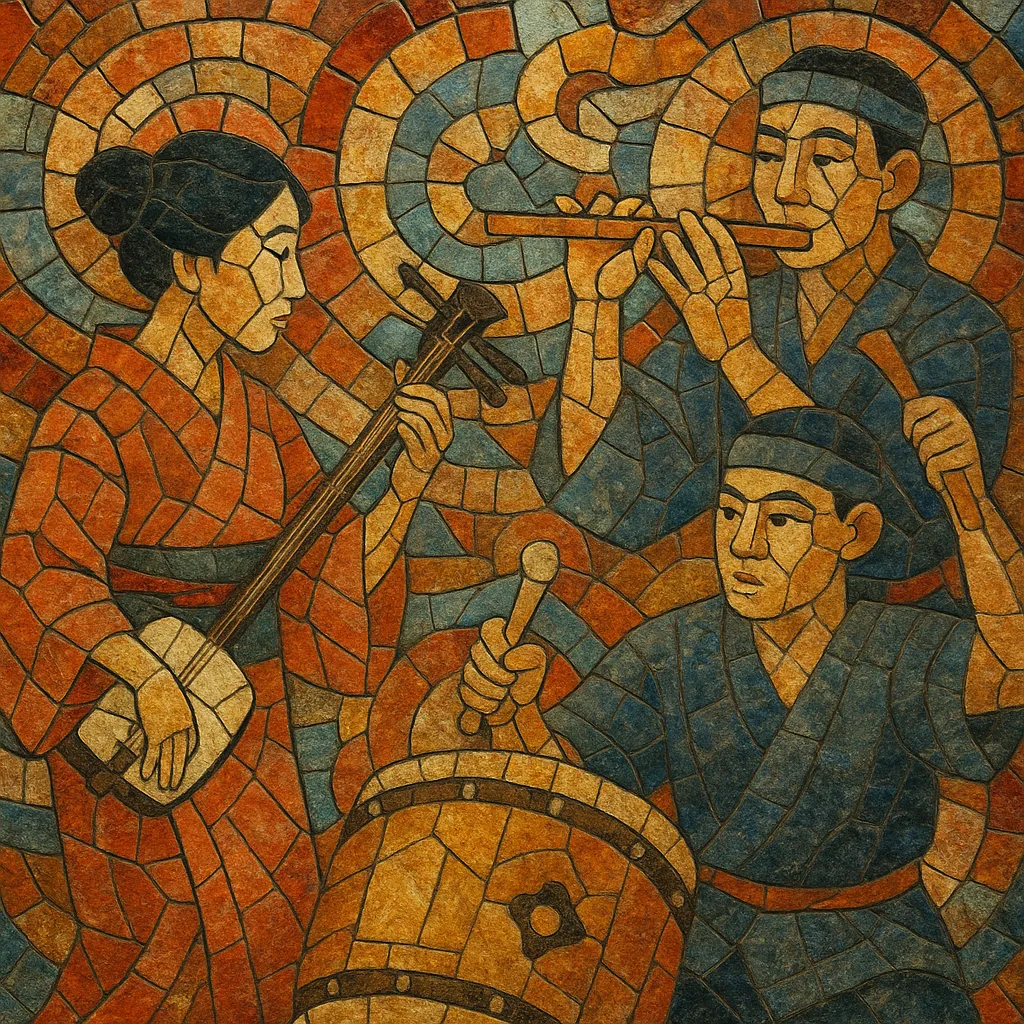Ondō is a Japanese festival song-and-dance style (ondo literally means "leading the rhythm") widely associated with Bon Odori summer events and regional matsuri. It features a steady, swinging duple meter, call-and-response vocals, and simple, catchy refrains designed for group circle dances.
Melodies typically draw on Japanese pentatonic scales (yo and in scales), and accompaniment often includes shamisen, shinobue (bamboo flute), taiko, atarigane/kane (hand bell), and handclaps. Regional variants such as Kawachi Ondo, Tokyo Ondo, Akita Ondo, and Hanagasa Ondo give the style local color through dialect, distinct kakegoe (shouted interjections), and characteristic dance moves.
While rooted in folk practice, ondō also entered mass media through early-20th-century recordings and radio, producing enduring popular numbers that remain staples of community dance repertoires in Japan and in Japanese diaspora communities worldwide.
Ondō traces its functional roots to Edo-period folk dance and song practices connected to the Buddhist Obon season, when communities gathered to honor ancestors with communal dancing. These gatherings favored repetitive, easily memorized refrains and a steady swing suitable for circular procession, establishing the core ondō groove and participatory format.
In the 1930s, the burgeoning recording and broadcasting industries in Japan helped standardize and popularize named ondō pieces such as “Tokyo Ondo.” The integration of folk melodies and festival imagery with the then-contemporary kayōkyoku songcraft brought ondō into urban entertainment, while preserving its dance function. After World War II, enka singers and min’yō specialists recorded numerous regional ondō titles, cementing a national repertoire. The 1964 Tokyo Olympics further amplified the style’s visibility through “Tokyo Gorin Ondo,” a festival song disseminated via mass media.
Local traditions like Kawachi Ondo (Osaka area) flourished, with professional and semi-professional singers leading extended, semi-improvised verses over steady taiko/shamisen ostinati. Ensembles began to incorporate microphones, electric bass or guitar for outdoor festivals, while preserving traditional narimono (percussion) and call-and-response structures.
Ondō remains central to Bon Odori across Japan and within Japanese diaspora communities in Hawaiʻi, North and South America, and beyond. Contemporary recordings by enka and pop artists revisit classic ondō titles, and media franchises occasionally adopt an ondō groove for “matsuri-themed” songs. Community preservation societies, local governments, and festival committees continue to teach dance figures and maintain living repertoires that blend tradition with new compositions.


